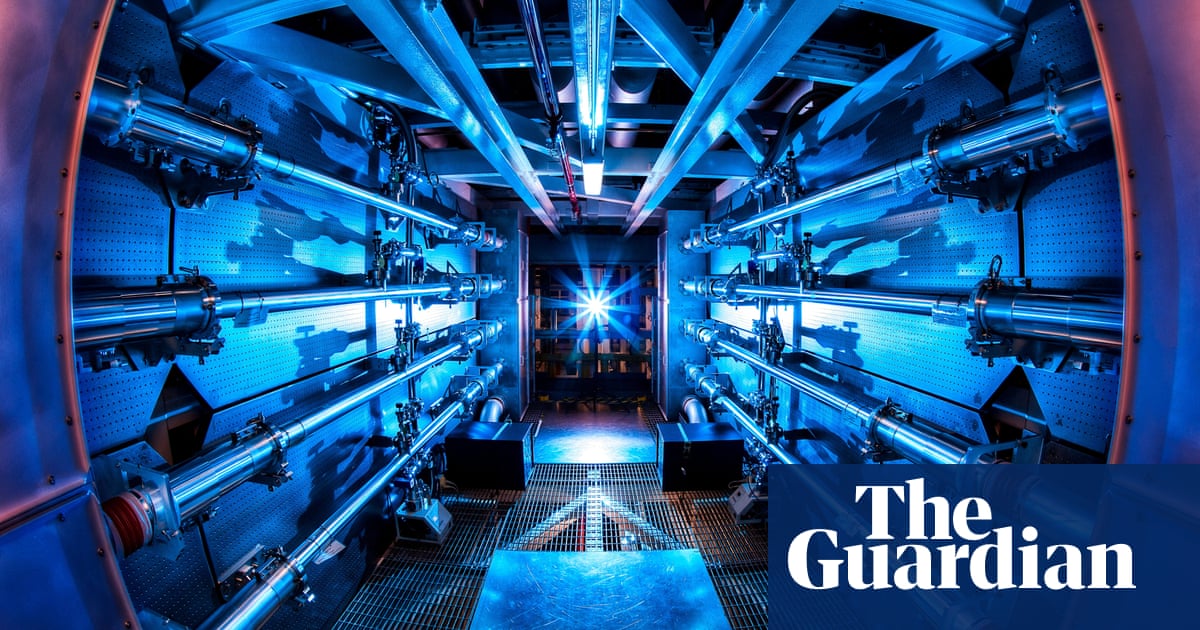You matter. If You Don’t Matter You Energy.
Can anyone explain this pun? I don’t get it.
Einstein’s most famous equation relates mass and energy: E=mc^2 . So, if you’re not matter (mass), you’re energy. Which, by the way, is how we make energy in fusion reactions, converting mass to energy.
This is the best summary I could come up with:
US scientists have achieved net energy gain in a nuclear fusion reaction for the second time since a historic breakthrough in December last year in the quest to find a near-limitless, safe and clean source of energy
Scientists at the California-based Lawrence Livermore National Laboratory repeated the breakthrough in an experiment in the National Ignition Facility (NIF) on 30 July that produced a higher energy yield than in December, a Lawrence Livermore spokesperson said.
The approach, which gives rise to the heat and light of the sun and other stars, has been hailed as having huge potential as a sustainable, low-carbon energy source.
In December, Lawrence Livermore first achieved a net energy gain in a fusion experiment using lasers.
The Energy Department called it “a major scientific breakthrough decades in the making that will pave the way for advancements in national defense and the future of clean power.”
Fusion energy raises the prospect of plentiful clean power: the reactions release no greenhouse gases or radioactive waste byproducts.
I’m a bot and I’m open source!
It may only be two atoms, but it’s yet another tiny step in the right direction. It may still be generations before fusion is a scalable and reliable power source, but at this point I think we’ve proved it isn’t impossible.
The energy released was orders of magnitudes greater than that which would have been released by only fusing two atoms, so I strongly suspect that this is just poor wording and/or misunderstanding by the news agency and that what was really meant was that the lasers fused pairs of atoms.
Maybe I’m just over-hopeful, but I think “generations” is far too much of an over
understatement. With the way that technology moves, I don’t think we’ll be waiting that long.I think we will keep accelerating, but Fusion has taken so, so long to get to where we are now, every advancement has been met with a setback, and we still only have a few parts of it working on small scales.
The ones to watch for the next few years are ITER and CFETR for large scale tokamak style reactors, as well as SPARC for a much more compact solution that looks very promising as it can be built faster and cheaper. I don’t really see inertial confinement or pinch reactors being the way forward for power generation, but you never know.
deleted by creator
Oh for goodness sake. 400MJ in for 3.15MJ out is not a net energy gain. I wish just once they’d be honest about what they do, it’s ok to do basic physics research without pretending you’ve saved the world every six months.
Where do you get those numbers from? They don’t seem to match the figures in this article or the article it links to. I get that you’re saying they leave out some important facts about the total energy used in the experiment, but I’m curious about exactly what’s not documented here.
Wikipedia’s figures for the last time they made this claim. The exact figures might be a bit different this time round, but I doubt they’ve found 99% efficiency gains. Livermore sends out this sort of press release pretty regularly and it always comes down to the same creative accounting
Basically, there’s a whole load of input energy that they just don’t count. Heat? Doesn’t count. UV? Doesn’t count. Plasma? Doesn’t count. this diagram from the wiki might be instructive. There may be decent justifications for counting it like this - I don’t know, I’m not a nuclear physicist. But I think the way they continue to report it to the media is simply dishonest.
The logic is that they don’t count ignition costs because they only have to be paid once. So it’s producing more than it consumes, and would eventually start netting a surplus.
So, how long was this reaction? “Brief moment” is not very detailed. At the Wendelstein 7-X reactor, they can keep up a fusion reaction for around 8 minutes without anything overheating.
Beyond just trying to maintain a reaction, we’ll need a design that allows for the extraction of working energy. At present, all designs require tons of additional energy to keep them cool. We’re very far from any design that is power positive in a real sense. Any time you ask one of the fusion fanboys about this there’s a lot of hand waving, but I’ve never seen any actual proposals to extract working heat from the reactor. Any designs that require supercooling are especially problematic. It’s really difficult to extract heat capable of turning a turbine through the supercooled magnetic containment.
Fusion will happen, but not before a whole lot more money and time (in decades) disappears into the money pit.
Why do people keep saying the NIF experiment was a net gain? People focus on the laser input at the end of the line, which was 20MJ and produced 25MJ. But the input power to charge the capacitors was 422MJ.
The whole experiment produced 5% of what was put in.
In theory, the charging cost only needs to be spent on ignition.










